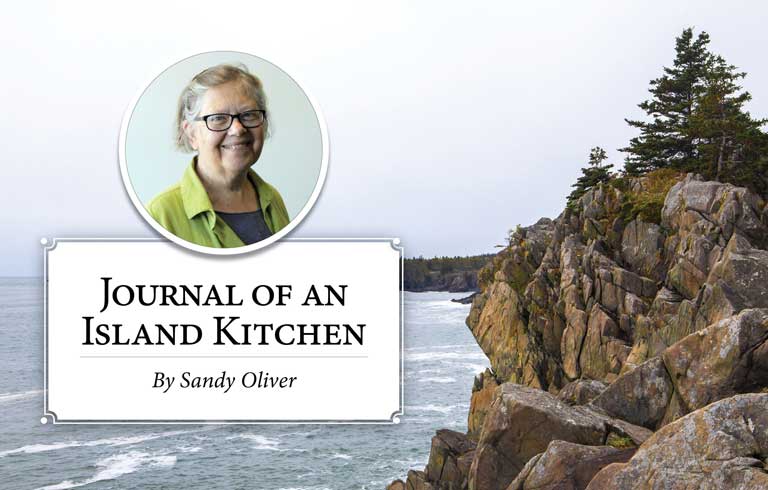Roughly three-and-a-half servings of gazpacho remained in the fridge, beginning to get just a wee bit fizzy (you know, fermenting) and perfectly fine after a boil-up. Since I used commercial tomato-based vegetable juice as a kind of stock for it, about a third of that containerful lurked on the top shelf of the fridge, suitable for adding.
A couple of very ripe tomatoes trying to juice themselves on the window sill, luring fruit flies, obviously needed to be eaten, all chopped up and added to the gazpacho.
As luck would have it, a half-pint of homemade canned salsa offered itself, so I added that to the mix. Plus one cob of cooked corn, kernels easily sliced off and stirred in. I jazzed the mix with a little additional cumin and chili, the leading spice in the gazpacho and heated it up for lunch.
Specifics are pretty ephemeral and highly subject to local conditions.
I cleaned out three containers and one plastic bag of food, freeing up space in the fridge, and making a wholesome soup. No food wasted.
No recipe.
I expect that lots of home cooks use this recipe-free method to concoct meals. We’d have to or go broke feeding our families, wasting bucket loads of food, and spending way too much time shopping for groceries. To be sure, I used a quasi-recipe to make the gazpacho; having made it before, I knew the basics of assembling it, but it was pretty free-form. Same with the canned salsa, which, had I grown up eating, I would probably make without a written recipe the way I now put together the Old-Family Spaghetti Sauce without one.
Plenty of our common fare is made with non-recipes. Peanut butter and jelly sandwiches, for instance, though you can find recipes for them in cookbooks and on the internet, apparently written for newcomers to our culture or newly minted cooks who grew up without benefit of a home cook to initiate them.
One internet recipe called for the “secret ingredient” of butter, and said to spread the peanut butter on one slice of bread and “swirl” the jam into it, then top with the other slice of bread. The first reader comment said, “This is stupid—slap peanut butter on a piece of bread and jelly on the other and BAM you got your freaking sandwich.”
Still, recipes are coin of the realm. Those of us who have to write them, are constantly reminded that specifics are required, and never, ever say, “add salt to taste,” despite the fact that most people who eat, add salt to their food unless their doctors have said not to.
Specifics are pretty ephemeral and highly subject to local conditions. For example, stove temperatures vary from stove to stove: a couple nights at a friend’s house using her electric stove reminded me that specifying “medium hot” would get her a different result on her stove than what I get for medium hot on my gas stove. Not all ovens are calibrated the same, and in fact, if I need to hustle a baked good along, I jack the temperature ten degrees and nothing awful happens.
Ingredients, too, vary. Newly dug potatoes take longer to cook than old ones. But we don’t buy our potatoes from the store according to their age, and if you buy potatoes in May in Maine you can be assured that they probably weren’t dug that week, unless they were imported from a different hemisphere.
Then what about measuring chopped vegetables in cups? A half-cup of chopped bell pepper or onion or carrot leaves a portion of vegetable on the counter, to be tossed into a fridge to rot unless the cook feels brave enough to round up or down to the nearest whole vegetable.
In this case, recipes promote waste unless cooks pry their fingers off recipe cards long enough to use them, or is a vigilante about part-vegetables or fruits. “Here, darlings, is your crudite platter.”
I don’t see recipes very often calling for leftovers, though many are wonderful helps in getting through a week of meals. Meatloaf, roasted chicken, mashed potatoes, extra pasta, cooked rice, cooked fish, and baked beans all have a great life past Meal #1.
Leftover lasagna? Well, another lasagna dinner. Leftover potato salad? Great home fries. Leftover stew? Add broth and barley or small pasta for soup.
No recipe needed.
Sandy Oliver is a food historian who gardens, cooks, and writes on Islesboro. She may be reached at SandyOliver47@gmail.com.





